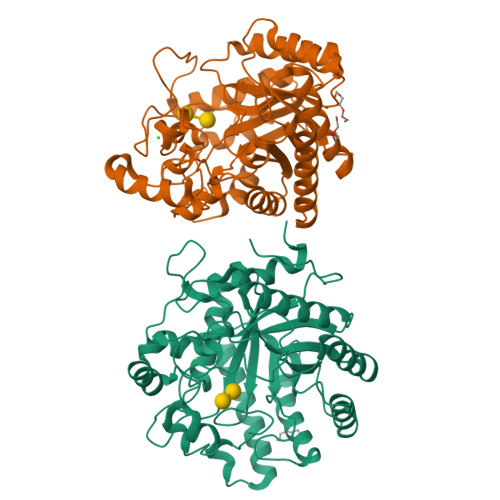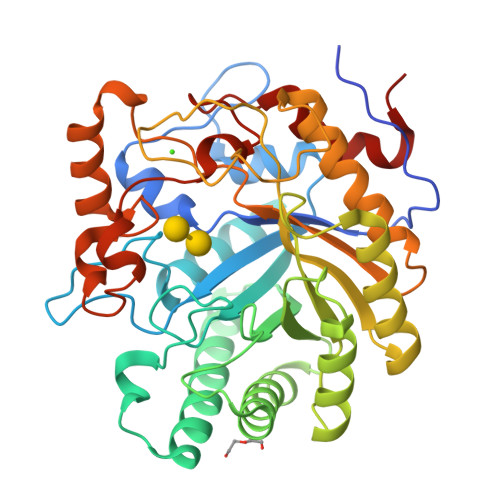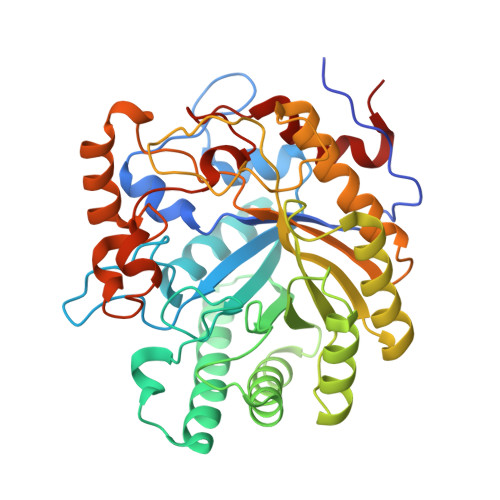The Structure of Endo-Beta-1,4-Galactanase from Bacillus Licheniformis in Complex with Two Oligosaccharide Products
Ryttersgaard, C., Le Nours, J., Lo Leggio, L., Jorgensen, C.T., Christensen, L.L.H., Bjornvad, M., Larsen, S.(2004) J Mol Biology 341: 107
- PubMed: 15312766
- DOI: https://doi.org/10.1016/j.jmb.2004.05.017
- Primary Citation of Related Structures:
1R8L, 1UR0, 1UR4 - PubMed Abstract:
The beta-1,4-galactanase from Bacillus licheniformis (BLGAL) is a plant cell-wall-degrading enzyme involved in the hydrolysis of beta-1,4-galactan in the hairy regions of pectin. The crystal structure of BLGAL was determined by molecular replacement both alone and in complex with the products galactobiose and galactotriose, catching a first crystallographic glimpse of fragments of beta-1,4-galactan. As expected for an enzyme belonging to GH-53, the BLGAL structure reveals a (betaalpha)(8)-barrel architecture. However, BLGAL betaalpha-loops 2, 7 and 8 are long in contrast to the corresponding loops in structures of fungal galactanases determined previously. The structure of BLGAL additionally shows a calcium ion linking the long betaalpha-loops 7 and 8, which replaces a disulphide bridge in the fungal galactanases. Compared to the substrate-binding subsites predicted for Aspergillus aculeatus galactanase (AAGAL), two additional subsites for substrate binding are found in BLGAL, -3 and -4. A comparison of the pattern of galactan and galactooligosaccharides degradation by AAGAL and BLGAL shows that, although both are most active on substrates with a high degree of polymerization, AAGAL can degrade galactotriose and galactotetraose efficiently, whereas BLGAL prefers longer oligosaccharides and cannot hydrolyze galactotriose to any appreciable extent. This difference in substrate preference can be explained structurally by the presence of the extra subsites -3 and -4 in BLGAL.
Organizational Affiliation:
Centre for Crystallographic Studies, Department of Chemistry, University of Copenhagen, Universitetsparken 5, DK-2100 Copenhagen, Denmark.






















